Flat Bands: Design, Topology, and Correlations
Updated: 2012-11-29 00:00:00
Workshop: 6 Mar 2013 - 9 Mar 2013, Dresden, Germany. Organized by Marcel Franz, Roderich Moessner, Sid Parameswaran.
 On Friday night, Nov. 16, about 1000 people came out to Fermilab to see five physicists duke it out... with science.
The occasion was the laboratory's first ever physics slam. A physics slam is kind of like a poetry slam—the five contestants were given 12 minutes each to explain a complex particle physics concept to an auditorium filled with laymen. And they had to do it in the most entertaining way they could, because audience applause determined the winner.
On Friday night, Nov. 16, about 1000 people came out to Fermilab to see five physicists duke it out... with science.
The occasion was the laboratory's first ever physics slam. A physics slam is kind of like a poetry slam—the five contestants were given 12 minutes each to explain a complex particle physics concept to an auditorium filled with laymen. And they had to do it in the most entertaining way they could, because audience applause determined the winner. Launch tour »
Launch tour » Time ceaselessly speeds onward in our everyday experience, never taking so much as half a step backward. Now, thanks to experimental results from the BaBar collaboration, researchers can be sure that the same is also true for single, isolated particles. Time is indeed asymmetric, even on exceedingly small scales.
Time ceaselessly speeds onward in our everyday experience, never taking so much as half a step backward. Now, thanks to experimental results from the BaBar collaboration, researchers can be sure that the same is also true for single, isolated particles. Time is indeed asymmetric, even on exceedingly small scales. Scientists on an experiment at the Large Hadron Collider confirmed this week the existence of a particle-like structure first observed at the LHC’s predecessor, the Tevatron.
Members of the CMS collaboration announced on Nov. 14 that they had spotted a curious object, dubbed Y(4140), that the CDF experiment had detected in March 2009.
“We don’t know what it is,” says Vincenzo Chiochia, co-convener of the B physics group for CMS. “We observe a structure consistent with previous observations from the Tevatron.”
Scientists on an experiment at the Large Hadron Collider confirmed this week the existence of a particle-like structure first observed at the LHC’s predecessor, the Tevatron.
Members of the CMS collaboration announced on Nov. 14 that they had spotted a curious object, dubbed Y(4140), that the CDF experiment had detected in March 2009.
“We don’t know what it is,” says Vincenzo Chiochia, co-convener of the B physics group for CMS. “We observe a structure consistent with previous observations from the Tevatron.”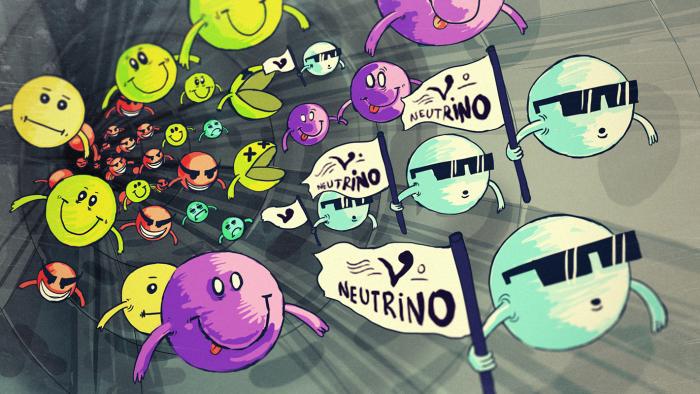 <div class="field-item even"Neutrinos are among the most abundant particles in the universe, but they rarely interact with matter. Some of today’s outstanding scientific mysteries, such as why there is more matter than antimatter in the universe, could be solved by studying neutrinos and detecting their interactions with matter.
Billions of neutrinos from natural sources, including the Sun, zip through every square centimeter of the Earth each second. Yet scientists cannot easily determine their initial type or exactly how far they traveled before reaching a detector.
<div class="field-item even"Neutrinos are among the most abundant particles in the universe, but they rarely interact with matter. Some of today’s outstanding scientific mysteries, such as why there is more matter than antimatter in the universe, could be solved by studying neutrinos and detecting their interactions with matter.
Billions of neutrinos from natural sources, including the Sun, zip through every square centimeter of the Earth each second. Yet scientists cannot easily determine their initial type or exactly how far they traveled before reaching a detector.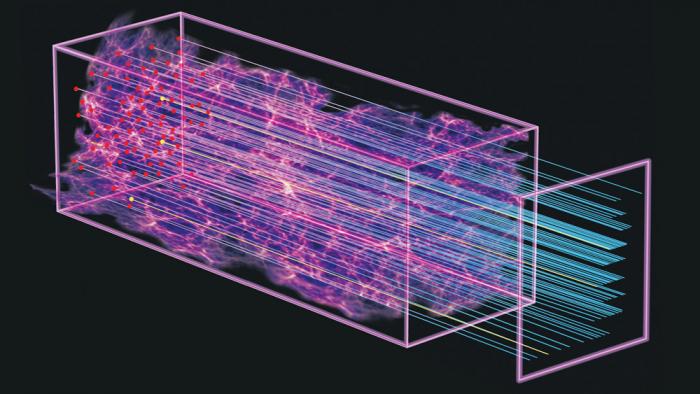 The universe is expanding, with every galaxy speeding away from all others at an ever-increasing rate. But it hasn’t always been that way. Eleven billion years ago, the speed of that expansion was beginning to slow as gravity pulled galaxies in toward one another. That was before dark energy came into play.
The universe is expanding, with every galaxy speeding away from all others at an ever-increasing rate. But it hasn’t always been that way. Eleven billion years ago, the speed of that expansion was beginning to slow as gravity pulled galaxies in toward one another. That was before dark energy came into play.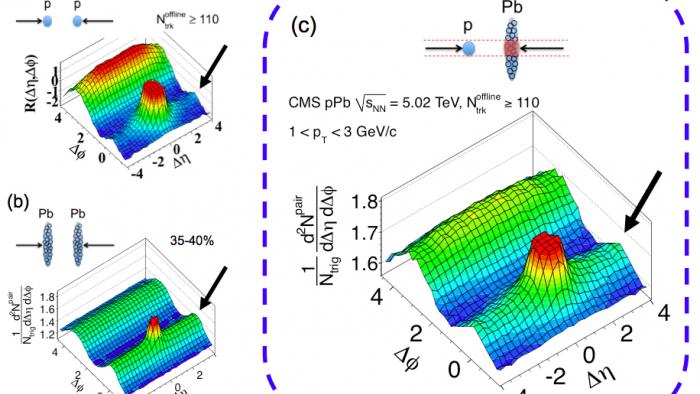 <div class="field-item even"CMS physicists observed an unusual trend in the data they collected in September when they collided protons with lead ions instead of other protons.
Particles produced in collisions tend to travel in opposite directions, but in one in roughly every 2 million collisions, the physicists saw particles travel in a common direction. Seemingly unrelated particles located apart from one another in the detector also had a tendency to travel in a common direction.
<div class="field-item even"CMS physicists observed an unusual trend in the data they collected in September when they collided protons with lead ions instead of other protons.
Particles produced in collisions tend to travel in opposite directions, but in one in roughly every 2 million collisions, the physicists saw particles travel in a common direction. Seemingly unrelated particles located apart from one another in the detector also had a tendency to travel in a common direction. More than 300 scientists who study the sky in the high-powered light of gamma rays came together last week for five days of presentations, meetings and the chance to compare notes at the Fourth International Fermi Symposium. Acronyms flew thick and fast: SNR (supernova remnant), TGF (terrestrial gamma-ray flashes) and AGN (active galactic nucleus) were only a few of the TLAs (three-letter acronyms) to be heard.
More than 300 scientists who study the sky in the high-powered light of gamma rays came together last week for five days of presentations, meetings and the chance to compare notes at the Fourth International Fermi Symposium. Acronyms flew thick and fast: SNR (supernova remnant), TGF (terrestrial gamma-ray flashes) and AGN (active galactic nucleus) were only a few of the TLAs (three-letter acronyms) to be heard.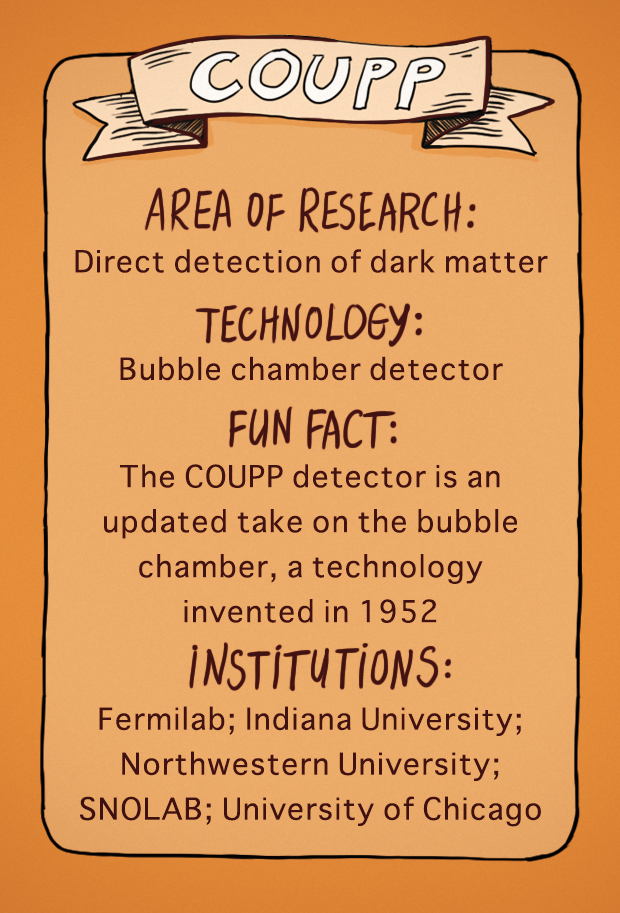 In September, postdoc Hugh Lippincott prepared for a roadtrip that would take him and physicist Erik Ramberg northeast from their starting point near Chicago through Michigan and across the Canadian border. He stocked a cargo van they rented for the occasion with granola bars, apples and an iPod heavy on Pearl Jam. But this was no joyride. This was a practice run.
In September, postdoc Hugh Lippincott prepared for a roadtrip that would take him and physicist Erik Ramberg northeast from their starting point near Chicago through Michigan and across the Canadian border. He stocked a cargo van they rented for the occasion with granola bars, apples and an iPod heavy on Pearl Jam. But this was no joyride. This was a practice run.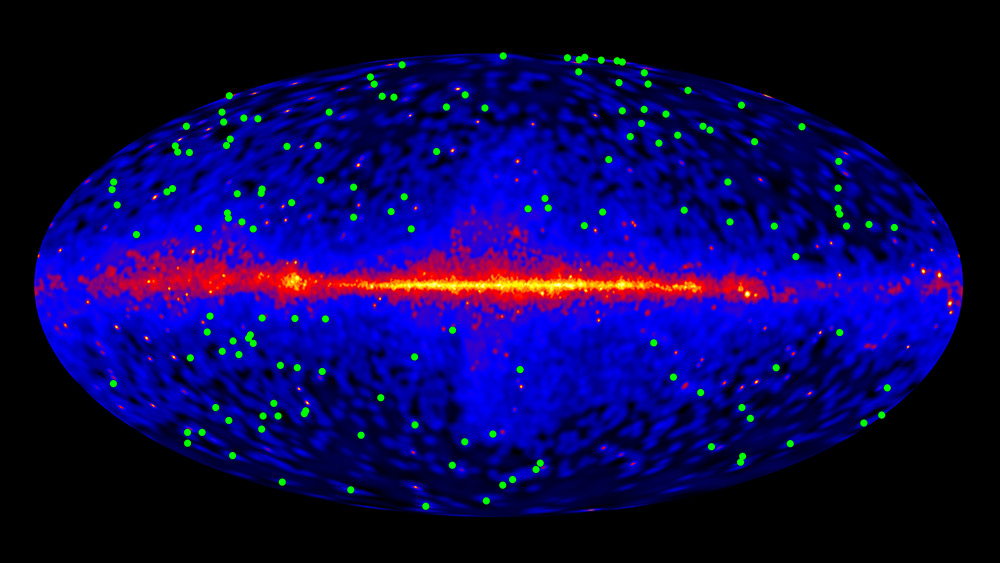 Using data from the Fermi Gamma-ray Space Telescope, an international team of scientists has determined the density of stars in the universe: 1.4 stars per 100 billion cubic light-years.
Counting all of the stars in the universe is no small task. To arrive at this number, the collaboration used a clever combination of measurements.
Using data from the Fermi Gamma-ray Space Telescope, an international team of scientists has determined the density of stars in the universe: 1.4 stars per 100 billion cubic light-years.
Counting all of the stars in the universe is no small task. To arrive at this number, the collaboration used a clever combination of measurements. It’s a story of archeology, chemistry and physics coming together to preserve an artifact unlike any other—a story made possible by light sources, accelerator-based machines that produce exceptionally intense beams of X-rays.
Nearly 500 years ago, the flagship of Henry VIII’s navy, the Mary Rose, sank outside of Portsmouth while maneuvering to engage the French fleet. Raised from the bottom of the Atlantic in 1985, the Mary Rose is now an important historical object.
It’s a story of archeology, chemistry and physics coming together to preserve an artifact unlike any other—a story made possible by light sources, accelerator-based machines that produce exceptionally intense beams of X-rays.
Nearly 500 years ago, the flagship of Henry VIII’s navy, the Mary Rose, sank outside of Portsmouth while maneuvering to engage the French fleet. Raised from the bottom of the Atlantic in 1985, the Mary Rose is now an important historical object. On July 4, scientists around the world popped open champagne bottles and toasted the culmination of nearly five decades of research. They had discovered a new particle, one that looked awfully similar to the long-sought Higgs boson.
The Higgs boson has for decades been the last missing piece of the Standard Model of particle physics. But even if the new particle completes the puzzle, some of its pieces still refuse to fit.
On July 4, scientists around the world popped open champagne bottles and toasted the culmination of nearly five decades of research. They had discovered a new particle, one that looked awfully similar to the long-sought Higgs boson.
The Higgs boson has for decades been the last missing piece of the Standard Model of particle physics. But even if the new particle completes the puzzle, some of its pieces still refuse to fit.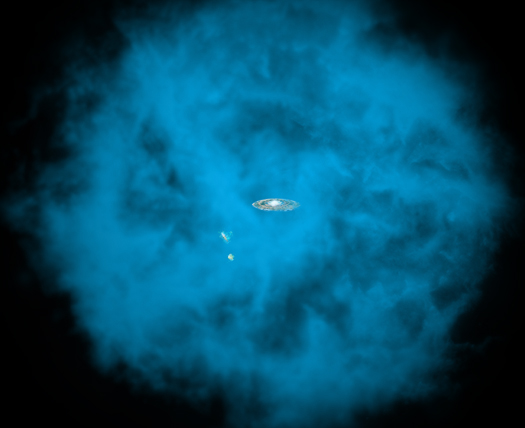 Astronomers have used NASA's Chandra X-ray Observatory to find evidence our Milky Way Galaxy is embedded in an enormous halo of hot gas that extends for hundreds of thousands of light years.
Astronomers have used NASA's Chandra X-ray Observatory to find evidence our Milky Way Galaxy is embedded in an enormous halo of hot gas that extends for hundreds of thousands of light years.